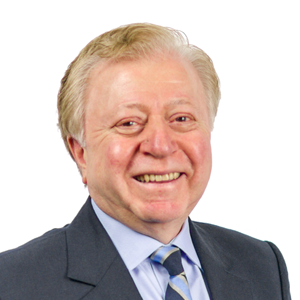Zygomatic implants are now increasingly in demand to treat a severely atrophic maxilla.[i] This is no surprise, given the stunning results that can be achieved for partially or fully edentulous patients needing to restore their function and aesthetics.
A limited number of restorative options are open to patients once an advanced level of bone resorption has taken place. Low maxillary bone density associated with physiological bone remodelling and resorption can prevent implant placement without either alveolar ridge and/or sinus augmentation. Although they are a good solution for many patients, and the field is developing in fascinating ways to reduce the impact as well as associated risks for patients, bone grafts are still not without some pitfalls.[ii] [iii]
Recent advances in zygomatic implantology have made this procedure an increasingly appealing addition to the skillset of oral surgeons, as it enables them to restore dental function where there is not adequate bone for standard implants.[iv] Zygomatic implants typically require just one surgical procedure, and allow for immediate loading, which considerably shortens rehabilitation time and removes many of the risks compared to alternative treatments.[v]
Despite the complexity of the procedure, and the skill level required, zygomatic implants are now considered a relatively minimally invasive solution.[vi] In recent years, the small number of post-zygomatic implant complications identified in studies is a testament to the skill of existing implant surgeons utilising the treatment.[vii]
Complications are rare today, but can be serious. A potentially devastating outcome is orbital trauma, mitigated by selecting the appropriate size and direction of the implant into the zygoma. Accurate 3D pre-operative planning and appropriate surgical skills, precision and accuracy are also vital.[viii] The complexity of the zygomatic bone and overall maxillofacial structure means that any intervention poses risks to blood vessels and nerves, again requiring a high level of expertise to negotiate. Biological complications, such as maxillary sinusitis and buccal mucosal recession, can be mitigated through the use of innovative new surgical techniques.[ix] [x]
Cutting-edge expertise in zygomatic implant procedures to treat a severely resorbed maxilla is a real advantage in the quickly-expanding field of implantology. This includes a familiarity with the newest and most appropriate technology to maximise outcomes for patients.
Piezoelectric surgery – the benefits of precision, powered by ultrasound
 Piezoelectric surgery has been developed principally for use in bone surgery. The ultrasound-driven technology is based on the high frequency vibration of a metallic tip which can cut bone without damaging soft tissue. Selective cutting and minimal operative invasion reduces bleeding as well as the risk of perforating the Schneider membrane.[xi]
Piezoelectric surgery has been developed principally for use in bone surgery. The ultrasound-driven technology is based on the high frequency vibration of a metallic tip which can cut bone without damaging soft tissue. Selective cutting and minimal operative invasion reduces bleeding as well as the risk of perforating the Schneider membrane.[xi]
Although the principles behind piezoelectric surgery have been around for over 70 years,[xii] there has been a recent boom in the development of technology and techniques because of its myriad advantages.[xiii]
Particularly in the field of maxillofacial and implant surgery, piezosurgical devices have been lauded for precise, safe and effective osteotomies.[xiv] They have been shown to be particularly effective in various techniques like sinus lift, ridge splitting and bone harvesting, which may be used if the alveolar ridge is inadequate.[xv]
Micrometric cutting offers superior precision with no bone loss, and requires significantly less force than conventional drilling, meaning superior control.[xvi] [xvii] Further control over the surgical site is made possible because of the ‘cavitation effect’, where bubbles are created from the physiological salt solution, leading to implosion and generating a shock wave that enables precise micro-coagulation and less bleeding.[xviii]
The lack of necrosis in the cut area accelerates bone regeneration, so patients heal faster and are less likely to experience complications. Studies have also identified an antiseptic effect, as cells are stimulated by oxygen released with the piezoelectric vibrations, and the lack of air-water spray generated with rotary instruments removes the risk of emphysema.[xix] [xx]
Piezoelectric surgery and zygomatic implants, the minimally invasive combination
Innovations in piezoelectric surgery combined with new developments in implant surgery make zygomatic implants an even safer option for patients. The Minimally Invasive Piezo Technique was designed to minimise the risks of zygomatic implants using piezoelectric technology. It was developed by leading oral surgeon, Professor Andrea Tedesco in Italy, and first presented in the UK at the Zygomatic 2019 Conference in London.
Professor Tedesco, and eminent Specialist Oral Surgeon, Professor Cemal Ucer, will be sharing the wealth of their knowledge in an upcoming course at the ZAGA centre Manchester/ ICE Postgraduate Dental Institute, Manchester. The course will provide intensive hands-on surgical experience in the use of zygomatic, nazalus, trans-sinus and pterygoid implants for the treatment of severely atrophic maxilla. Delegates will receive training in the conventional, as well as the Zygomatic Minimally Invasive Technique (Z.M.I.T) with piezoelectric instrumentation, and will have access to the most state-of-the-art facilities to explore the latest techniques with the highest possible level of guidance.
Those who wish to introduce zygomatic implants into their practice will benefit from incorporating the most current techniques to minimise the risk of collateral damage occurring to vital anatomical structures, including the surrounding blood vessels and nerves. Having optimal skill in this most cutting-edge area of dentistry will mean clinicians can offer more patients with limited options a real reason to smile.
Please contact Professor Ucer at ucer@icedental.institute or Mel Hay at mel@mdic.co
01612 371842
https://icedentalimplants.co.uk/
Professor Cemal Ucer (BDS, MSc, PhD, Oral Surgeon, ITI Fellow)
FYI
Prof. Cemal Ucer, BDS, MSc, PhD, FDTFEd., ITI Fellow, Specialist Oral Surgeon

Cemal Ucer first established an implant referral centre in 1995. He was awarded an MSc in Implantology at Manchester Dental Hospital following his research into guided bone regeneration and osteopromotion. He later gained a PhD for his clinical and laboratory studies into the factors affecting the success of implant treatment in iliac grafts and the investigation of the effect of skeletal bone density on implant survival. He has personally trained and mentored more than 1,000 dentists in implant dentistry as one of the main providers of implant education in the UK.
Cemal’s current clinical research interests include immediate implant placement, reconstructive bone surgery, nerve damage and the effect of bone density on the success of implant treatment. Academically, he has gained European recognition for his work on the development of a new framework for teaching and assessment of clinical competence in implantology. He is a co-author of the consensus paper produced by the Association for Dental Education in Europe (ADEE) following the first pan-European collaboration between EU universities to establish common training and assessment standards in dental implantology. He is an invited member of the working group convened by the FGDP (UK) and the General Dental Council (GDC) to update the Training Standards in Implant Dentistry (TSID) guidelines in 2012 and 2016.
Cemal is a Fellow of the Dental Trainers Faculty of the Royal College of Surgeons of Edinburgh (RCSEd) and a Fellow of the International Team for Implantology (ITI) and a member of Megagen’s MINTEC UK & I Board for education and clinical research. He is a member of the editorial board of JOMR (Journal of Oral & Maxillofacial Research) and the chair of the editorial advisory board of Implant Dentistry Today. Cemal is Professor and Clinical Lead of the MSc programme in Dental Implantology and a member of the Faculty of Examiners of the Royal College of Surgeons of Edinburgh’s Diploma in Implant Dentistry. He is a past president of The Association of Dental Implantology (ADI) (2011-2013).
Cemal has been appointed by FGDP (UK) to lead the working group to develop the “national standards in implant dentistry” which is due to be published later in 2018 following the completion of an external consultation process.
[i] Sakkas, A., Wilde, F., Heufelder, M. et al. Autogenous bone grafts in oral implantology—is it still a “gold standard”? A consecutive review of 279 patients with 456 clinical procedures. Int J Implant Dent 3, 23 (2017). https://doi.org/10.1186/s40729-017-0084-4
[ii] Sakkas A, Schramm A, Karsten W, Gellrich NC, Wilde F. A clinical study of the outcomes and complications associated with zygomatic buttress block bone graft for limited preimplant augmentation procedures. J Craniomaxillofac Surg. 2016 Mar;44(3):249-56. doi: 10.1016/j.jcms.2015.12.003. Epub 2015 Dec 17. PMID: 26787383.
[iii] Aalam AA, Krivitsky-Aalam A, Zelig D, Oh S, Holtzclaw D, Kurtzman GM. Trans-sinus dental implants, for immediate placement when insufficient alveolar height is present: an alternative to zygomatic implants – surgical case series. Ann Med Surg (Lond). 2023 Jan 23;85(1):51-56. doi: 10.1097/MS9.0000000000000201. PMID: 36742123; PMCID: PMC9893428.
[iii] Pérez A.S., Pastorino D., Aparicio C., Neyra M.P., Rabia Sannam Khan RS., Wright S., Ucer C., Success Rates of Zygomatic Implants for the Rehabilitation of Severely Atrophic Maxilla: A Systematic Review Published: 12 August 2022.
[iv] Antonio D’Agostino, Giorgio Lombardo, Vittorio Favero, Annarita Signoriello, Anna Bressan, Fabio Lonardi, Riccardo Nocini, Lorenzo Trevisiol, Complications related to zygomatic implants placement: A retrospective evaluation with 5 years follow-up, Journal of Cranio-Maxillofacial Surgery, Volume 49, Issue 7, 2021, Pages 620-627.
[v] Pérez A.S., Pastorino D., Aparicio C., Neyra M.P., Rabia Sannam Khan RS., Wright S., Ucer C., Success Rates of Zygomatic Implants for the Rehabilitation of Severely Atrophic Maxilla: A Systematic Review Published: 12 August 2022.
[vi] Mark Krauthammer, Amir Shuster, Daphna Mezad-Koursh, Benjamin Shlomi, Chaim Stolovitch, Igal Leibovitch, Extraocular muscle damage from dental implant penetration to the orbit, American Journal of Ophthalmology Case Reports, Volume 5, 2017, Pages 94-96,
[vii] Bone Regeneration and Soft Tissue Enhancement Around Zygomatic Implants: Retrospective Case Series
[viii] Solà Pérez A, Pastorino D, Aparicio C, Pegueroles Neyra M, Khan RS, Wright S, Ucer C. Success Rates of Zygomatic Implants for the Rehabilitation of Severely Atrophic Maxilla: A Systematic Review. Dent J (Basel). 2022 Aug 12;10(8):151. doi: 10.3390/dj10080151. PMID: 36005249; PMCID: PMC9406716.
[ix] Hennet P. Piezoelectric Bone Surgery: A Review of the Literature and Potential Applications in Veterinary Oromaxillofacial Surgery. Front Vet Sci. 2015 May 5;2:8. doi: 10.3389/fvets.2015.00008. PMID: 26664937; PMCID: PMC4672167.
[x] Rahnama M, Czupkałło L, Czajkowski L, Grasza J, Wallner J. The use of piezosurgery as an alternative method of minimally invasive surgery in the authors’ experience. Wideochir Inne Tech Maloinwazyjne. 2013 Dec;8(4):321-6. doi: 10.5114/wiitm.2011.35144. Epub 2013 May 14. PMID: 24501602; PMCID: PMC3908639.
[xi] Rahnama M, Czupkałło L, Czajkowski L, Grasza J, Wallner J. The use of piezosurgery as an alternative method of minimally invasive surgery in the authors’ experience. Wideochir Inne Tech Maloinwazyjne. 2013 Dec;8(4):321-6. doi: 10.5114/wiitm.2011.35144. Epub 2013 May 14. PMID: 24501602; PMCID: PMC3908639.
[xii] Nandagopal N., and John B., An overview on the art of piezosurgery in the maxillofacial practice. J Oral Med Oral Surg Volume 28, Number 1, 2022. https://doi.org/10.1051/mbcb/2021029 15 December 2021
[xiii] Nandagopal N., and John B., An overview on the art of piezosurgery in the maxillofacial practice. J Oral Med Oral Surg Volume 28, Number 1, 2022. https://doi.org/10.1051/mbcb/2021029 15 December 2021
[xiv] Rahnama M, Czupkałło L, Czajkowski L, Grasza J, Wallner J. The use of piezosurgery as an alternative method of minimally invasive surgery in the authors’ experience. Wideochir Inne Tech Maloinwazyjne. 2013 Dec;8(4):321-6. doi: 10.5114/wiitm.2011.35144. Epub 2013 May 14. PMID: 24501602; PMCID: PMC3908639.
[xv] Escoda-Francolí J, Rodríguez-Rodríguez A, Berini-Aytés L, Gay-Escoda C. Application of ultrasound in bone surgery: two case reports. Med Oral Patol Oral Cir Bucal. 2010 Nov 1;15(6):e902-5. PMID: 20526244.
[xvi] Pakhare VV, Khandait CH, Shrivastav SS, Dhadse PV, Baliga VS, Seegavadi VD. Piezosurgery®-assisted periodontally accelerated osteogenic orthodontics. J Indian Soc Periodontol. 2017 Sep-Oct;21(5):422-426. doi: 10.4103/jisp.jisp_255_17. PMID: 29491592; PMCID: PMC5827513.
[xvii] Pakhare VV, Khandait CH, Shrivastav SS, Dhadse PV, Baliga VS, Seegavadi VD. Piezosurgery®-assisted periodontally accelerated osteogenic orthodontics. J Indian Soc Periodontol. 2017 Sep-Oct;21(5):422-426. doi: 10.4103/jisp.jisp_255_17. PMID: 29491592; PMCID: PMC5827513.
[xviii] Rahnama M, Czupkałło L, Czajkowski L, Grasza J, Wallner J. The use of piezosurgery as an alternative method of minimally invasive surgery in the authors’ experience. Wideochir Inne Tech Maloinwazyjne. 2013 Dec;8(4):321-6. doi: 10.5114/wiitm.2011.35144. Epub 2013 May 14. PMID: 24501602; PMCID: PMC3908639.













